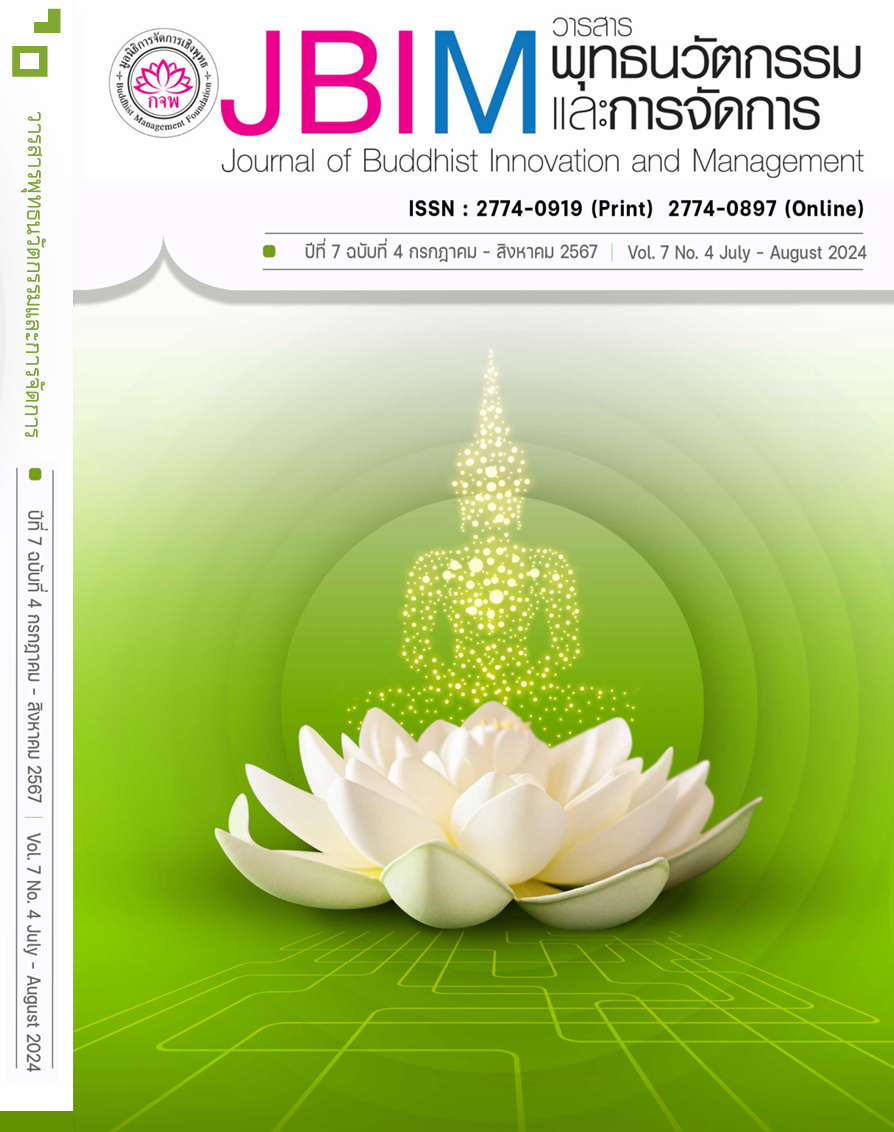บทบาทการจัดการความตายให้ศพผู้ป่วยยากไร้และไร้ญาติ ของมูลนิธิไม่แสวงหากำไรแห่งหนึ่งในกรุงเทพมหานคร
คำสำคัญ:
การจัดการความตาย, ผู้ป่วยยากไร้, ญาติเสมือน, มูลนิธิไม่แสวงหากำไร, ความเอื้อเฟื้อเผื่อแผ่บทคัดย่อ
บทความวิจัยนี้มีวัตถุประสงค์เพื่อศึกษาบทบาทการจัดการความตายให้ศพผู้ป่วยยากไร้และไร้ญาติของมูลนิธิแห่งหนึ่งในกรุงเทพมหานคร การศึกษานี้ใช้การวิจัยเชิงคุณภาพด้วย 3 วิธีการคือ 1. การศึกษาเอกสาร 2. การสัมภาษณ์กึ่งโครงสร้างกับผู้ให้ข้อมูลสำคัญจำนวน 5 ท่าน และ 3. การสังเกตการณ์แบบมีส่วนร่วมและไม่มีส่วนร่วม ดำเนินการเก็บข้อมูลระหว่างเดือนสิงหาคม 2563 ถึงเดือนมกราคม 2564
ผลการวิจัยพบว่า มูลนิธิมีบทบาทสำคัญในการจัดการความตายของศพผู้ป่วยยากไร้และผู้ป่วยไร้ญาติที่เสียชีวิตจากการรักษาพยาบาลในโรงพยาบาลในเขตกรุงเทพมหานคร โดยมูลนิธิมีบทบาทสำคัญนับตั้งแต่การดูแลศพ การเป็นผู้ระดมทุนในการจัดงานศพ การเป็นผู้ประสานงานดำเนินการพิธีทางศาสนา โดยบทบาทดังกล่าวสะท้อนถึงสิ่งสำคัญคือการทำหน้าที่ลดความเหลื่อมล้ำในการจัดการความตายให้ศพของกลุ่มเปราะบางทางสังคม ผ่านการสวมบทบาทความเป็นญาติเสมือนให้กับศพของผู้ป่วย ผลการศึกษาชี้ให้เห็นความจำเป็นต่อการพัฒนานโยบายที่เกี่ยวข้องกับการจัดการความตายของประชากรกลุ่มเปราะบางที่ถูกจำกัดด้วยเงื่อนไขทางเศรษฐกิจและสังคมที่อาจมีแนวโน้มเพิ่มสูงขึ้นในเขตกรุงเทพมหานคร
เอกสารอ้างอิง
กระทรวงสาธารณสุข. (2566). สถิติสาธารณสุข พ.ศ. 2565. สืบค้น 14 กุมภาพันธ์ 2567, จาก https://shorturl.asia/qZQSW
โกมาตร จึงเสถียรทรัพย์ และราตรี ปิ่นแก้ว. (2550). สถานการณ์และองค์ความรู้เกี่ยวกับความตายในสังคมไทย. ใน โกมาตร จึงเสถียรทรัพย์ และคณะ. วัฒนธรรม ความตาย กับวาระสุดท้ายของชีวิต: คู่มือเรียนรู้มิติสังคมของการดูแลผู้ป่วยระยะสุดท้าย (น.1-24). กรุงเทพฯ: สำนักวิจัยสังคมและสุขภาพ.
ณัฐธิดา ศรีนาค. (2563). การศึกษาวิธีการจัดการศพไร้ญาติและศพนิรนามของประเทศไทยและต่างประเทศ. วารสารกระบวนการยุติธรรม, 13(2), 139-152.
นฤพนธ์ ด้วงวิเศษ. (2554). Altruism-คำศัพท์ทางมานุษยวิทยา. สืบค้น 28 เมษายน 2567, จาก https://anthropology-concepts.sac.or.th/glossary/7
เบญจา ยอดดำเนิน แอ๊ตติกจ์ และกาญจนา ตั้งชลทิพย์. (2552). การวิเคราะห์ข้อมูลเชิงคุณภาพ: การจัดการข้อมูล การตีความ และการหาความหมาย. นครปฐม: มหาวิทยาลัยมหิดล.
พลเดช ปิ่นประทีป. (2562). ความเหลื่อมล้ำในด้านสาธารณสุข. นนทบุรี: สำนักงานคณะกรรมการสุขภาพแห่งชาติ.
ภาวิกา ศรีรัตนบัลล์. (2561). บ้านสุดท้ายของชีวิต: มุมมองเชิงสังคมวิทยาต่อการบริบาลคุณภาพชีวิตระยะท้าย (พิมพ์ครั้งที่ 3). นนทบุรี: สำนักงานคณะกรรมการสุขภาพแห่งชาติ.
_____. (2566). Sociology of Disposal-ร่าง (ศพ) ในสังคมร่วมสมัย. เชียงใหม่: สำนักงานการวิจัยแห่งชาติ.
วัลภา คุณทรงเกียรติ. (2558). การตายดีตามการรับรู้ของสมาชิกครอบครัวผู้ป่วย. วารสารคณะพยาบาลศาสตร์มหาวิทยาลัยบูรพา, 23(3), 41-55.
สนิท สมัครการ. (2539). มีเงินก็นับว่าน้อง มีทองก็นับว่าพี่ : ระบบครอบครัวและเครือญาติของไทย (พิมพ์ครั้งที่ 3). กรุงเทพฯ: สถาบันบัณฑิตพัฒนบริหารศาสตร์.
สรายุทธ ยหะกร. (2555). สังคมวิทยาแห่งความตาย. นนทบุรี: มหาวิทยาลัยสุโขทัยธรรมาธิราช.
สำนักบริหารการทะเบียน กรมการปกครอง. (2566). ระบบสถิติทางการทะเบียน. สืบค้น 29 มีนาคม 2567, จาก https://stat.bora.dopa.go.th
สุขพัฒน์ อนนท์จารย์. (2566). คนตายสอนคนเป็น. กรุงเทพฯ: สำนักพิมพ์ MD.
Gualda, E. (2022). Altruism, solidarity and responsibility from a committed sociology: contributions to society. The American Sociologist, 53(1), 29-43.
Hernández, F. C. & Meneses, F. C. (2023). Nobody should die alone. Loneliness and a dignified death during the COVID-19 pandemic. Omega-Journal of death and dying, 88(2), 550-569.
Pholpanga, O. et al. (2011). Unidentified corpses: Development of management model in charity organizations of Chinese-Thai people. Journal of Social Sciences, 7(4), 605-610.
Selman, L. E. et al. (2021). Sadness, Despair and Anger when a Patient Dies Alone from COVID-19: A thematic Content Analysis of Twitter data from Bereaved Family Members and Friends. Palliative Medicine, 35(7), 1267-1276.
Walter, T. (2020). Death in the Modern World. Los Angeles, CA: Sage.
Wittek, R. & Bekkers, R. (2015). Sociology of altruism and prosocial behavior. In J.D. Wright (Ed.), International encyclopedia of the social & behavioral sciences (vol 1, pp. 579–583). Amsterdam: Elsevier.
Wuthnow, R. (1993). Altruism and Sociological Theory. Social Service Review, 67(3), 344–357.






